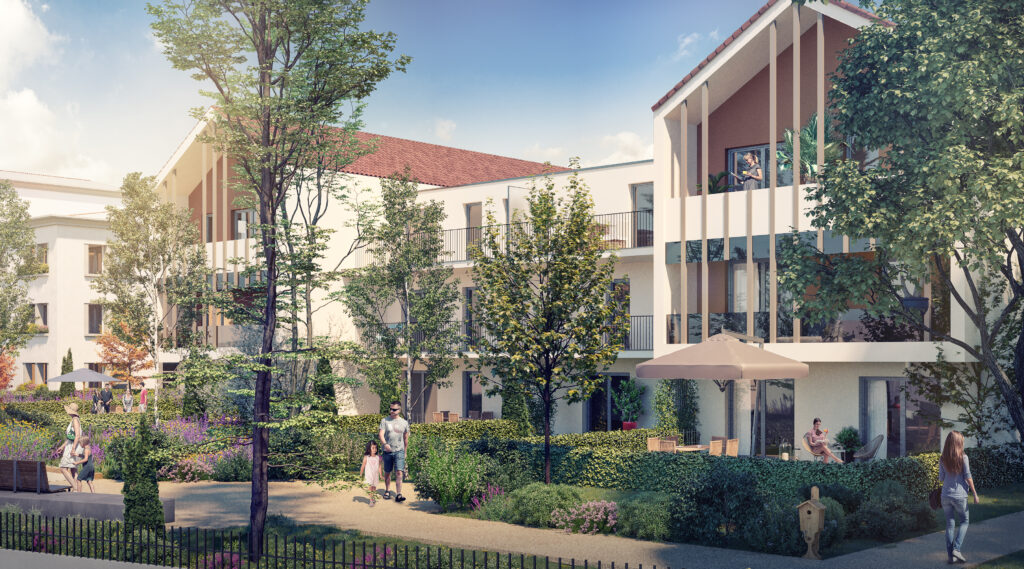Different trades are involved in a 3D modeling project. With the adoption of a new working method and the development of new technologies in the building industry, teamwork has found a new dynamic.
Discover BIM, a collaborative approach to the 3D creation process: definition, players and tools.
BIM: how does it improve team collaboration?

Effective management is the key to maintaining smooth, productive collaboration between multiple stakeholders in a project.
The BIM process for improved collaboration
Building Information Modeling (BIM) is a method of managing information on construction projects.
The M in the acronym BIM can stand for Model in reference to the model or digital mock-up, or Modeling in reference to the modeling of rules for data creation, transmission and use, or Management in relation to the organization of stakeholders and the management of data flows in the project.
BIM is a collaborative working method that uses a 3D digital model as the central element for exchanges between stakeholders throughout the project lifecycle. It is a collaborative work process for organizing, structuring and exploiting information relating to a building.
At the heart of the BIM approach are 4 levels, called "maturity levels", which determine the degree of use of the BIM process and the extent of interaction between members of the 3D modeling team. To identify your level of collaboration, take a look at the different levels:
- Level 0 : This is the lowest level. At this level, BIM collaboration is non-existent. Stakeholders work with their own files and software. Information and documents are exchanged in a poorly structured way, often on 2D drawings on paper or in electronic files.
- Level 1: defined as the level of partial collaboration, it does not yet feature real collaboration between the different disciplines, but each project stakeholder uses an online archive or Common Data Environment (CDE) to share the data collected by each.
- Level 2 : This level presents a palpable beginning to collaboration. To work, the players produce either a 3D model designed with BIM software, or a file in IFC format, which guarantees interoperability. Data is centralized in an EDC, which is a securely accessible common work environment, but each player manages his or her own database.
- Level 3 : In Level 3, or integrated collaboration, all team members work on the same BIM platform. They work with a single, scalable, shared digital model stored in a common cloud on a centralized server. This high level of collaboration improves the reliability, efficiency and quality of construction projects.
Stakeholders who can collaborate on BIM projects
A BIM project brings together all building professionals in a team, from engineering offices to specialized subcontractors. Here's an overview of the main uses of the BIM process by each category of profession:
- Project owners who define objectives and requirements ;
- Architects who use the information to create detailed digital models ;
- The engineers who design the building structure;
- MEP engineers (Mechanical, Electrical, Plumbing) who use BIM to integrate these systems into the overall design;
- Construction contractors who need BIM to plan and execute construction work;
- BIM coordinators are responsible for managing BIM models and coordinating the various disciplines to avoid conflicts and design errors.
Everyone involved in a BIM modeling project plays an essential role, leveraging the information provided throughout the project lifecycle to make informed decisions.
Collaborative work around 3D modeling requires close coordination between these different players, and using the right tools can optimize the fluidity of the collaboration.
BIM: which team communication tools for 3D modeling?

Whether you're a developer, engineer, architect, builder, project owner or design office, to ensure good teamwork and communication, you need the right tools.
Various specialized BIM collaborative tools will help you to carry out 3D modeling projects as a team.
BIM collaborative modeling software
BIM collaborative software is a tool for managing and exchanging 3D digital models, plans and other elements essential to modeling a building creation or renovation project.
Using collaborative modeling software can improve various aspects of your teamwork, such as communication between stakeholders, use of resources, accuracy of information and data, or work structure and task planning.
For efficient teamwork, you can choose from several software packages with advanced collaboration features.
- Revit offers real-time collaboration and allows users to work simultaneously. This software lets you synchronize, save, revise and update your work around a central model shared within your project environment and collaboration. Users can add comments to the model using labeling, 2D and 3D illustration and dimensioning tools.
- ArchiCAD has developed TeamWork 2, a single database for managing the entire project, and BIMcloud, a multi-user collaboration solution. Teams can also work in parallel on different aspects of the project, then merge their contributions thanks to parallel workflows.
- Bentley AECOsim is software designed for multidisciplinary teams, enabling architects, structural, electrical and mechanical engineers to design, analyze, document and visualize buildings of any size, shape and complexity. With ProjectWise, collaboration with a multidisciplinary team anywhere in the world is possible.
- Vectorworks Architect offers a collaborative workflow, with built-in communication tools to facilitate collaboration. Teams can work together on the same model.
BIM collaborative platform
A BIM platform is an online data-sharing environment where the various parties involved in a project can share and access various documents (digital mock-ups, tables, diagrams, images, etc.).
BIM collaborative platforms facilitate and optimize communication within your team. They simplify BIM collaboration.
A BIM platform encompasses a set of tools and functionalities that enable team members to work together on a 3D modeling project.
Unlike BIM collaboration software, it does not enable teams to create and modify digital models. It is mainly used for annotating, commenting and sharing.
Among the essential functionalities of collaborative BIM platforms that enable work optimization are :
- Add comments directly on models, as with Trimble Connect
- The use of instant messaging for rapid exchanges like Autodesk's BIM 360
- Managing different levels of access rights
- Visualization of models, ensuring that each user has the same geometric rendering
Before integrating a platform into your work tools, consider their practicality and intuitive use.
Virtual reality: collaborative immersive visualization
Virtual reality can be an excellent tool for remote collaboration. It provides a shared virtual workspace. You can use virtual reality to visualize and manage a 3D modeling project in real time.
Adopting virtual reality in your projects allows you to :
- Working together on digital models;
- Offer an immersive collaborative visualization of the 3D model with mixed reality that integrates the working environment into the visualization.
Integrating virtual reality into the BIM process brings added value to the various phases of the modeling project.
Entrust your project to our team!








